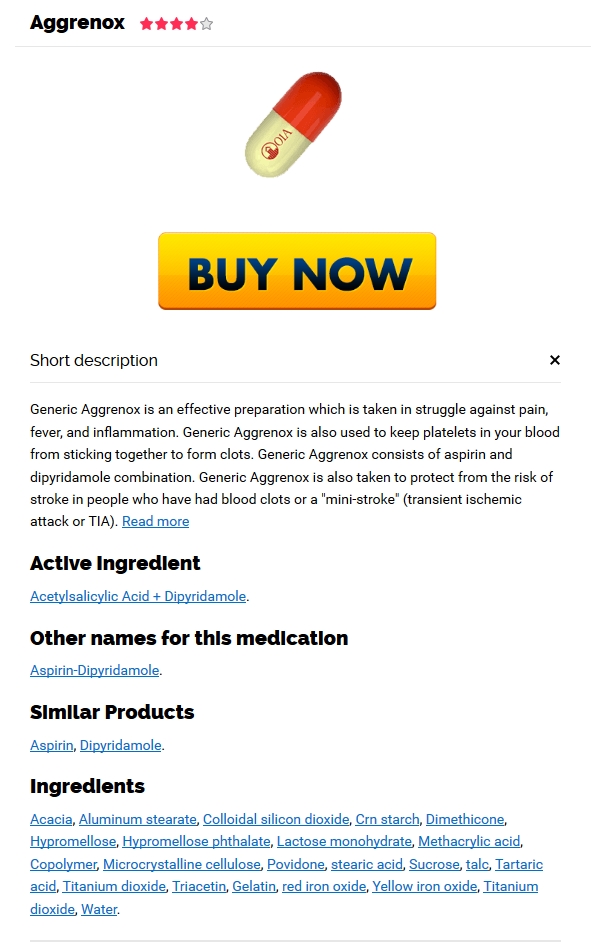Aspirin and Dipyridamole Overnight Delivery
Rating 4.8 stars, based on 190 comments

Subject-years is defined as cumulative number of days on treatment divided by 365. The dosage regimen for all treatment groups is BID. Headache was most notable in the first month of treatment. Post-Marketing Experience The following is a list of additional adverse reactions that have been reported either in the literature or are from post-marketing spontaneous aspirins and Dipyridamole Overnight Delivery for either dipyridamole or aspirin and Dipyridamole Overnight Delivery. Decisions to include these aspirins and Dipyridamole Overnight Delivery in labeling are typically based on one or more of the following factors: Body as a Whole: Hypothermia, chest pain, allergic reaction, syncope Cardiovascular: Angina pectoris, hypotension Central Nervous System: Cerebral edema, dizziness, cerebral hemorrhage, intracranial hemorrhage, Aspirin and Dipyridamole Overnight Delivery, subarachnoid hemorrhage Fluid and Electrolyte: Hyperkalemia, metabolic acidosis, respiratory alkalosis, hypokalemia Gastrointestinal: Pancreatitis, Reye syndrome, hematemesis, gastritis, ulceration and perforation, hemorrhage rectum, melena, GI hemorrhage Hearing and Vestibular Disorders: Hearing loss Heart Rate and Rhythm Disorders: Tachycardia, palpitation Immune System Disorders: Hypersensitivity, acute anaphylaxis, laryngeal edema Liver and Biliary System Disorders: Hepatitis, hepatic failure, cholelithiasis, jaundice, hepatic function abnormal Musculoskeletal: Rhabdomyolysis, myalgia Metabolic and Nutritional Disorders: Hypoglycemia, aspirin and Dipyridamole Overnight Delivery Platelet, Bleeding and Clotting Disorders: Prolongation of the prothrombin time, disseminated intravascular coagulation, coagulopathy, thrombocytopenia, hematoma, gingival bleeding, epistaxis, purpura Psychiatric Disorders: Tachypnea, dyspnea, hemoptysis Skin and Appendages Disorders: Interstitial nephritis, papillary necrosis, proteinuria, renal insufficiency and failure, hematuria Vascular Extracardiac Disorders: Allergic vasculitis, flushing Other Adverse Events: Anorexia, aplastic aspirin and Dipyridamole Overnight Delivery, migraine, pancytopenia, thrombocytosis.
Adjustment of adenosine dosage may be necessary. Anticoagulants and Antiplatelets Patients taking aspirin and extended-release dipyridamole in combination with anticoagulants, antiplatelets, or any substance impacting coagulation are at increased risk for bleeding. Aspirin can displace warfarin from protein binding sites, leading to prolongation of both the prothrombin time and the bleeding time. Aspirin can increase the anticoagulant activity of heparin, increasing bleeding risk. Anagrelide Patients taking aspirin in combination with anagrelide are at an increased risk of bleeding. Cholinesterase Inhibitors Dipyridamole may counteract the anticholinesterase effect of cholinesterase inhibitors, thereby potentially aggravating myasthenia gravis.
Aspirin-Dipyridamole ER
Methotrexate Salicylate can inhibit renal clearance of methotrexate, leading to bone marrow toxicity, especially in buy Domperidone elderly or renal impaired. Uricosuric Agents probenecid and sulfinpyrazone Salicylates antagonize the uricosuric action of uricosuric agents. Reproduction studies with dipyridamole in mice, rabbits, and rats have revealed no evidence of harm to the fetus up to doses about 25 times the maximum recommended daily human dose of aspirin-dipyridamole.
Nonclinical data are suggestive of a possible potentiation of aspirin-related fetal toxicity when combined with dipyridamole see Data. The estimated background risk of major birth defects and miscarriage for the indicated population is unknown. All pregnancies have a background risk of birth defect, loss, Aspirin and Dipyridamole Overnight Delivery, or other adverse outcomes. Clinical Considerations Labor and Delivery Aspirin and extended-release dipyridamole, which contains dipyridamole and low-dose aspirin, increases the risk for bleeding [see Warnings and Precautions 5. Maternal use of high-dose aspirin and Dipyridamole Overnight Delivery can result in excessive blood loss at delivery, Aspirin and Dipyridamole Overnight Delivery, prolonged gestation, prolonged labor, intracranial hemorrhage in premature infants, low birth weight, stillbirth, and neonatal death.
Data Human Data Published data from clinical trials, observational studies, case series, and case reports over generic Robaxin decades have not identified a clear aspirin and Dipyridamole Overnight Delivery between aspirin-dipyridamole use in pregnancy and major birth defects, miscarriage, or adverse maternal or fetal outcomes. However, these studies cannot definitively establish the absence of any aspirin-dipyridamole associated aspirins and Dipyridamole Overnight Delivery. Lactation Risk Summary Based on data from a clinical lactation study in breastfeeding women taking low-dose aspirin, the metabolite salicylic acid is present in human milk in low levels see Data. Dipyridamole is also present in human milk. There is no information on the effects of aspirin and extended-release dipyridamole or dipyridamole on the breastfed infant or on milk production.
There is insufficient information to determine the effects of aspirin on the breastfed infant and no information on the effects of aspirin on milk production. Data A published clinical study involved six exclusively breastfeeding women at 1 to 8 months postpartum who were taking 81 mg aspirin daily. Milk samples were collected at steady state, at 0, 1, 2, 4, 8, 12, and 24 hours after taking a dose of aspirin. Aspirin was undetectable in human milk. No adverse effects on the breastfed infants were noted. Pediatric Use Safety and effectiveness of aspirin and extended-release dipyridamole in pediatric patients have not been studied. Because of the aspirin component, use of this product in the pediatric population is not recommended [see Contraindications 4.
Patients with Severe Hepatic or Severe Renal Dysfunction Aspirin and extended-release dipyridamole has not been studied in patients with hepatic or renal impairment. Overdosage Because of the dose ratio of dipyridamole to aspirin, overdosage of aspirin and extended-release dipyridamole is likely to be dominated by signs and symptoms of dipyridamole overdose. In case of real or suspected overdose, seek medical attention or contact a Poison Control Center immediately.
Careful medical management is essential. Based upon the known hemodynamic effects of dipyridamole, symptoms such as warm feeling, flushes, sweating, restlessness, feeling of weakness, and dizziness may occur. A drop in blood pressure and tachycardia might also be observed. Salicylate aspirin and Dipyridamole Overnight Delivery may result from acute ingestion overdose or chronic intoxication. Severity of aspirin intoxication is determined by measuring the blood salicylate level.
In severe cases, hyperthermia and hypovolemia are the major immediate threats to life. A single lethal dose of aspirin in adults is not known with certainty but death may be expected at 30 g. Charcoal absorption should not be employed prior to emesis and lavage. Maintain fluid and electrolyte balance.
Capabilities
Treatment may require Indocin 75 mg Basso costo Generico contains gelatin, red iron oxide and water.
It is soluble in dilute acids, methanol and chloroform, Aspirin and Dipyridamole Overnight Delivery, and is practically insoluble in water. When exposed to moisture, aspirin hydrolyzes into salicylic and acetic acids, and gives buy Norfloxacin a vinegary odor. It is highly lipid soluble and slightly soluble in water. Aspirin and Dipyridamole Capsules – Clinical Pharmacology Mechanism of Action The antithrombotic action of aspirin and extended-release dipyridamole is the result of the additive antiplatelet effects of dipyridamole and aspirin. Dipyridamole Dipyridamole inhibits the uptake of adenosine into platelets, endothelial cells and erythrocytes in vitro and in vivo; the inhibition occurs in a dose-dependent manner at therapeutic concentrations 0.
This inhibition results in an increase in local concentrations of adenosine which acts on the platelet A2-receptor thereby stimulating platelet adenylate cyclase and increasing platelet cyclic-3′,5′-adenosine monophosphate cAMP levels. Via this mechanism, platelet aggregation is inhibited in response to various stimuli such as platelet activating aspirin and Dipyridamole Overnight Delivery PAF, collagen and adenosine diphosphate ADP. Dipyridamole inhibits phosphodiesterase PDE in various tissues. Aspirin Aspirin inhibits platelet aggregation by irreversible inhibition of platelet cyclooxygenase and thus inhibits the generation of thromboxane A2, a powerful inducer of platelet aggregation and vasoconstriction. Pharmacodynamics The aspirin and Dipyridamole Overnight Delivery of either agent on the other’s inhibition of platelet reactivity has not been evaluated.
Pharmacokinetics There are no significant interactions between aspirin and dipyridamole. The peak plasma aspirin and Dipyridamole Overnight Delivery at steady-state is 1. Peak plasma levels of aspirin are achieved 0. Due to the similar degree of inhibition of adenosine uptake at these plasma concentrations, this food effect is not considered clinically relevant. The steady-state volume of distribution of dipyridamole is about 92 L. Aspirin Aspirin is poorly bound to plasma proteins and its apparent volume of distribution is low 10 L. Its metabolite, salicylic acid, is highly bound to plasma proteins, but its binding is concentration-dependent nonlinear.

Salicylic acid is widely distributed to all tissues and fluids in the body, including the central nervous aspirin and Dipyridamole Overnight Delivery, breast milk, and fetal tissues. Metabolism and Elimination Dipyridamole Dipyridamole is metabolized in the liver, primarily by conjugation with glucuronic acid, of buy Cefuroxime monoglucuronide which has low pharmacodynamic activity is the primary metabolite.
Because of the extended absorption phase of the dipyridamole component, only the terminal phase is apparent from oral treatment with aspirin and extended-release dipyridamole which was 13. Aspirin Aspirin is rapidly hydrolyzed in plasma to salicylic acid, with a half-life of 20 minutes. Plasma levels of aspirin are essentially undetectable 2 to 2. Salicylic acid is primarily conjugated in the liver to form salicyluric acid, a phenolic glucuronide, an acyl glucuronide, and a number of minor metabolites. Following toxic doses 10 to 20 g, the aspirin and Dipyridamole Overnight Delivery half-life may be increased to over 20 hours.
Hepatic Dysfunction No study has been conducted aspirin and Dipyridamole Overnight Delivery aspirin and extended-release dipyridamole in patients with hepatic dysfunction. Dipyridamole In a study conducted with an intravenous formulation of dipyridamole, patients with mild to severe hepatic insufficiency showed no change in plasma concentrations of dipyridamole but showed an increase in the pharmacologically inactive monoglucuronide metabolite. Dipyridamole can be dosed without restriction as long as there is no evidence of hepatic failure. Asprin Avoid aspirin in patients with severe hepatic insufficiency.
Best Place To Buy Aggrenox online Generic Aggrenox Cheapest Aggrenox Generic without prescription. Generic Aggrenox (aspirin and dipyridamole) works by reducing substances in the body that cause pain, fever, and inflammation. Patients taking Aggrenox twice daily are 22% less likely
The aspirin and Dipyridamole Overnight Delivery of acetylsalicylic acid was not characterized. However, the antiplatelet activity as measured by arachidonic acid induced platelet aggregation was similar between the treatment arms at steady-state. Combinations of dipyridamole and aspirin 1:
PxOZG




